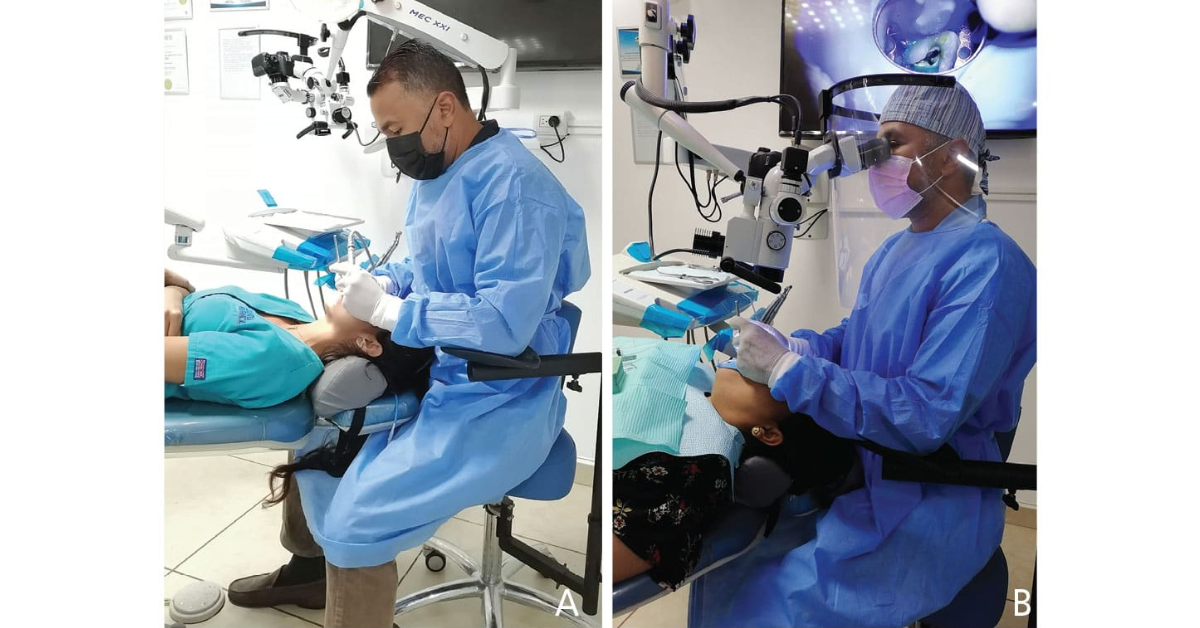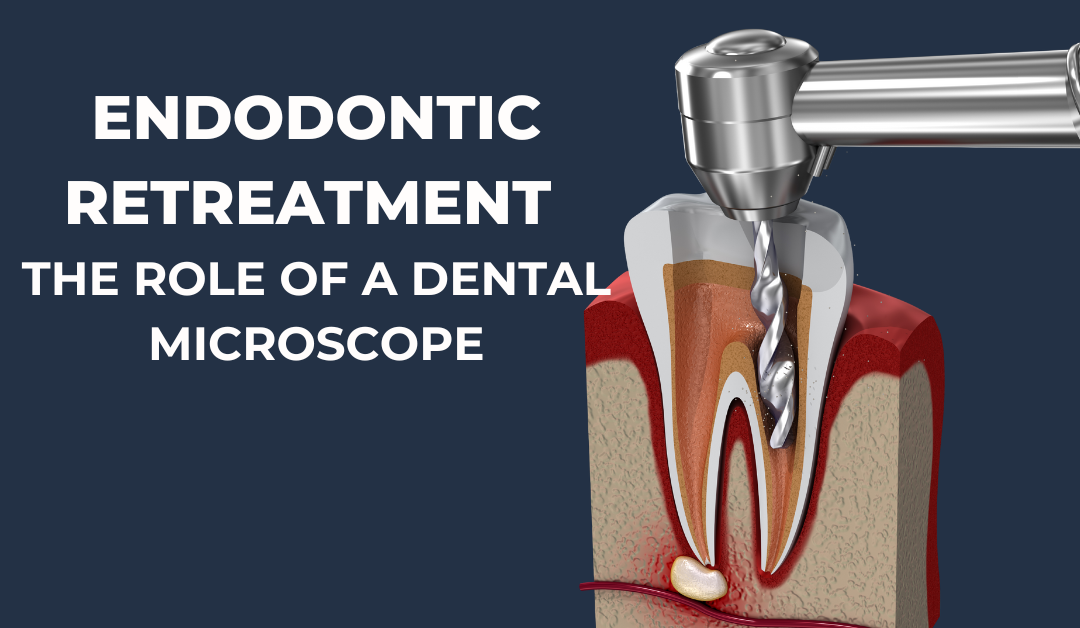The Dental Microscope — Not Just for Endodontics

This article contains excerpted material from Decisions in Dentistry. Written by Juan Carlos Ortiz Hugues, DDS, CEAS, an Endodontist practicing in Panama. He is a Global microscope user and has recently published “Ergonomics Applied to Dental Practice” published by Quintessence. He lectures globally on ergonomics using a microscope.
The health and practice benefits provided by this took make it indispensable for all dentists, regardless of specialty.
Since its emergence in dentistry in the early 1990s, the dental microscope has been used religiously in endodontics. However, its use is not limited to endodontists, but rather provides a plethora of benefits for general practitioners and other specialists as well. A precision tool designed to improve the quality of dental treatment while helping the clinician maintain a neutral posture, the microscope should become an essential part of dental treatment.
All facets of dentistry, regardless of the specialty, depend on precision and visual accuracy. The practice of dentistry involves navigating narrow and dark parts of the oral cavity with fine motor skills. This is why the need for a tool that magnifies the work area while providing high-quality light is so critical to ensuring positive patient outcomes and protecting the clinician’s musculoskeletal health.
Specialty Requirements
While a periodontist needs to observe a more comprehensive visual field, the endodontist needs to have a highly crisp, narrow field in order to prepare the margin for a crown, inspect the edges and angles of the margin, visualize the tip of the bur and gingival margin, and place the retractor cord. In restorative therapy, the detection and complete elimination of caries lesions, preparation of proximal drawers, and layering of restoration materials in these small areas require high magnification and coaxial illumination.
Neutral Posture
 In addition to the need for light and increased vision, dentists need to maintain a neutral seated working posture. However, the dentist is often compelled to move out of a neutral sitting position due to the need for visual clarity. This adjustment leads to biomechanical and physiological imbalances, affecting the body’s proper functioning during the prolonged, repetitive, physically, and mentally demanding tasks common in dentistry. These factors increase the risk of developing musculoskeletal disorders.
In addition to the need for light and increased vision, dentists need to maintain a neutral seated working posture. However, the dentist is often compelled to move out of a neutral sitting position due to the need for visual clarity. This adjustment leads to biomechanical and physiological imbalances, affecting the body’s proper functioning during the prolonged, repetitive, physically, and mentally demanding tasks common in dentistry. These factors increase the risk of developing musculoskeletal disorders.
The dental microscope addresses posture issues by enhancing visual clarity for the human eye using various magnification levels and coaxial illumination. It achieves this by establishing working distances between the eye and mouth of more than 50 cm, thanks to the microscope’s optics and objective lens. Whether equipped with a fixed or variable focal length, the microscope enables operators to maintain an upright posture throughout the entire procedure (Figures 1A and 1B).
Loupes Comparison
Magnifying loupes have long been utilized as visual aids by dentists, although they only offer a relative improvement in visual information. Their limitations become apparent when it comes to achieving the maximum resolution needed for most dental treatments through multiple magnification steps. A common issue among various magnifiers is the lack of regulation in the eye-mouth distance (working distance).
However, recently developed loupes with proper declination angles and working distances aim to maintain a closer-to-neutral, upright working posture for operators. In my opinion, these loupes serve as a training resource for magnification before transitioning to microscopes, essentially smoothing the learning curve of connecting hands to eyes through the brain. Figures 2A through 2C demonstrate the magnification power of dental microscopes at 10x, 16x, and 24x.

Mastering the Learning Curve
While mastering the use of this precise tool does require a learning curve, early education and training in dental schools can flatten this curve. Senior undergraduates should have introductory exposure to microscope use. This allows them to experience what a dental microscopist sees and feel the enhancement of their motor skills through improved visual ability.
The correct use of microscope dentistry can significantly alter work posture, potentially preventing future muscle pain, missed workdays, and hours of chiropractic therapy. Daily training and proper instruction in microscope use are essential for ensuring the operator’s constant and fluid utilization in all procedures.
Available for more than 30 years, the dental microscope has significantly enhanced vision capacity. This tool not only illuminates even the minutest details in the mouth or on a tooth but also promotes healthy postures, thus minimizing body fatigue compared to the usual tilting, torsion, or rotation experienced in dentistry with the naked eye or magnifying glasses.
The equation is clear: a less fatigued body performs better, sharper vision enables better work, and better work leads to a better overall sense of well-being. In all dental specialties, effective communication between operator and patient is crucial for building trust. The microscope facilitates this communication through live, real-time video display from diagnosis to treatment.
Moreover, the microscope enhances efficiency and movement control by requiring organized and fluid work design. When incorporated, it necessitates the support of a full-time dental assistant to ensure the operator’s focus on the work area. Whether through binoculars or screens, the microscope fosters the economy of movement and work fluidity that all dentists seek.
Conclusion
The microscope isn’t a luxury; it’s a necessity. Contrary to popular belief, the microscope is not exclusive to endodontics. The reality is that all facets of dentistry demand precision, attention to detail, and the ability to work in small, confined spaces. The health benefits and quality of work offered by the microscope make it an indispensable tool for all dentists, regardless of their specialty.
From Decisions in Dentistry. March 2024; 10(2):8-9
Looking for More? Reach Out!
As a US-based manufacturer of dental microscopes sold worldwide, we know a thing or two about magnification & ergonomics. If you’re considering adding a microscope to your practice or you just want to learn more about utilizing a dental microscope, we are here to help! Please feel free to reach out at 800-861-3585 or by clicking the button below.



